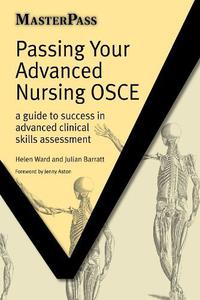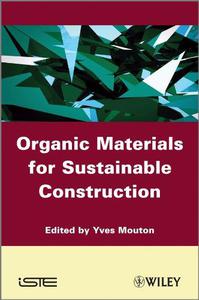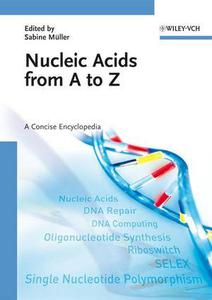
Passing Your Advanced Nursing OSCE: A Guide to Success in Advanced Clinical Skills Assessment
English | 2021 | ISBN: 184619234X | 190 Pages | PDF (True) | 9.32 MB
This book aims to provide an easily accessible quick reference guide for advanced nursing students preparing to undertake practical examinations to assess advanced clinical practice competence, and students preparing for practical examinations in non-medical prescribing assessment. These examinations are commonly known as objective structured clinical examinations (OSCEs). The book is a preparation and revision tool, designed to be read in conjunction with any recommended core clinical textbooks: however, along with giving students step-by-step instructions on performing well in OSCE scenarios, it also gives guidance to academic staff on preparing to teach and mark OSCEs. This book uses a case study approach to OSCEs in a coherent, consistent, and easily understandable style. Both authors are clinical academic nurse practitioners who regularly work in clinical practice in conjunction with teaching advanced nurse practitioner and non-medical prescribing students.

Kevin Brown, "Passage to the World: The Emigrant Experience 1807-1940"
English | ISBN: 1848321368 | 2013 | 256 pages | EPUB | 5 MB
From the early nineteenth century onwards, millions of people left their homes to cross the seas. Some, like the convicts transported from England to Australia, had no choice; others like the indentured Indian and Chinese laborers had almost no alternative; but the vast majority of emigrants were driven to escape war, famine or grinding poverty. Whatever their circumstances and wherever their destination, the one experience they all shared in common was the sea voyage.

PSYCHOLOGY OF MONEY by ROBERT MACK
English | 2022 | ISBN: N/A | ASIN: B0B6XQRY74 | 82 pages | EPUB | 0.18 Mb
Dear readers!

Organofluorine Chemistry By
2006 | 348 Pages | ISBN: 1405125616 | PDF | 3 MB
The replacement of hydrogen with fluorine in organic molecules can profoundly influence their chemical and physical properties, leading to a range of compounds with highly desirable properties. These molecules are of interest across the wide spectrum of industrial and academic organic chemistry, so that organofluorine chemistry is economically highly important. Organofluorine Chemistry will help chemists to develop a systematic knowledge of the chemistry of fluorine with a view towards its application in the design of new reactions and syntheses, and the creation of novel fluorinated molecules and materials. With initial chapters focusing on why fluorine creates such unique properties in organic compounds, the book then covers general reactions of fluorine. Coverage is chosen from the recent research literature, concentrating on the development of novel bioactive compounds and catalytic ligands, and explaining, in the context of the initial chapters, how and why fluorine is so effective. With a final chapter covering the general synthetic chemistry of organofluorine compounds, the book is a cohesive summary of the fundamental principals of organofluorine chemistry.Content: Chapter 1 Fundamentals in Organic Fluorine Chemistry (pages 1-100): Chapter 2 Unique Reactions Incluced by Fluorine (pages 101-138): Chapter 3 Reactions Activated by a Strong Interaction Between Fluorine and Other Atoms (pages 139-172): Chapter 4 Hydrogen Bonding in Organofluorine Compounds (pages 173-185): Chapter 5 Fluorinated Ligands for Selective Catalytic Reactions (pages 186-205): Chapter 6 Fluorine in Drug Designs (pages 206-222): Chapter 7 Method for Introduction of Fluorine?Functionality Into Molecules (pages 223-336):

Organic Materials for Sustainable Construction By
2011 | 649 Pages | ISBN: 1848212240 | PDF | 18 MB
This book provides an inventory of organic materials and products, the major components of all civil engineering projects, in terms of their scientific and technical background, including the regulations that cover their use and their predicted useful life. Such materials include: bitumen on the roads; geotextiles for retaining walls; membranes for bridges; tunnel and reservoir waterproofing; paint binders to protect metallic and concrete structures or to realize road markings; injection resins; gluing products; concrete admixtures; and composite materials. The presentation is based on a physicochemical approach, which is essential if these products are to be considered as part of sustainable development: as such, those studying or working in these fields will find this an invaluable source of information.Content: Chapter 1 Organic materials used in Construction at the Dawn of the Third Millennium (pages 1-14): Michel De Longcamp and Yves MoutonChapter 2 Sustainable Development Issues Regarding Organic Materials used in Civil Engineering (pages 15-36): Agnes JullienChapter 3 Health Risks of Organic Materials used in Construction (pages 37-50): Guy AuburtinChapter 4 Ecological Impacts of Organic Construction Materials (pages 51-62): Yves PerrodinChapter 5 Organic Polymers (pages 63-120): Jacques Verdu and Bruno FayolleChapter 6 Formulation of Plastics (pages 121-130): Michel de LongcampChapter 7 Ageing and Durability of Organic Polymers (pages 131-178): Jacques Verdu and Bruno FayolleChapter 8 Fireproofing polymeric materials (pages 179-188): Serge BourbigotChapter 9 Organic Materials, Waste and Recycling (pages 189-202): Vincent VerneyChapter 10 Geosynthetics and Waterproofing (pages 203-268): Philippe MestatChapter 11 Waterproofing Buildings (pages 269-282): Gerard HemondChapter 12 Elastomers and Rubbers used in Civil Engineering (pages 283-312): Michel FragnetChapter 13 Composite Materials and Construction (pages 313-338): Jean?Francois CaronChapter 14 Textile Materials (pages 339-352): Bernard Maurin and Romain FerrariChapter 15 Wood (pages 353-388): Remy MouterdeChapter 16 Bitumen, Road Construction and Sustainable Development (pages 389-406): Bernard LombardiChapter 17 Industrial Mortars and Repairing Concrete Products (pages 407-418): Pierre Boulanger and Paulo GoncaloChapter 18 Waterborne Paints to Limit VOC Emissions (pages 419-430): Emmanuel Aragon and Andre MargaillanChapter 19 Rheological Admixtures (pages 431-446): Nicolas RousselChapter 20 Contributions of Organic Admixtures in Construction Processes (pages 447-456): Francois CussighChapter 21 Organic Fibers in Cementitious Materials (pages 457-482): Laetitia D'Aloia?SchwartzentruberChapter 22 Adhesive Bonding, a Method for Construction (pages 483-501): Thierry ChaussadentChapter 23 Strengthening Concrete Structures by Externally Bonded Composite Materials (pages 503-528): Marc QuiertantChapter 24 Durability of FRP Strengthened Concrete Specimens under Accelerated Ageing (pages 529-552): Karim Benzarti, Marc Quiertant, Sylvain Chataigner and Christophe AubagnacChapter 25 Characterization of Organic Materials used in Civil Engineering by Chemical and Physico?chemical Methods (pages 553-582): Fabienne FarcasChapter 26 Organic Materials and Sustainable Architectural Design (pages 583-598): Michel PaulinChapter 27 Specific Contributions of Viscous Behavior Materials in Construction (pages 599-607): Bernard HalphenChapter 28 Organics in Construction - How Far? (pages 609-616): Henri Van DammeChapter 29 Thoughts on the Futurology in Research and Development of Innovative Materials (pages 617-630): Jean Billard

Optical Networks and Components Fundamentals and Advances
English | 2022 | ISBN: 9780429298417 | 857 pages | True PDF | 18.11 MB
Intended as an undergraduate/post graduate level textbook for courses on high speed optical networks as well as computer networks. Nine chapters cover basic principles of the technology and different devices for optical networks, as well as processing of integrated waveguide devices of optical networks using different technologies. It provides students, researchers and practicing engineers with an expert guide to the fundamental concepts, issues and state of the art developments in optical networks. Includes examples throughout all the chapters of the book to aid understanding of basic problems and solutions.

Nucleic Acids from A to Z: A Concise Encyclopedia By
2008 | 337 Pages | ISBN: 3527312110 | PDF | 7 MB
Concise but complete, this mini-encyclopedia contains over 1,500 entries covering all important concepts, compounds, techniques and acronyms for quick and easy reference. Guiding readers through the ever-increasing jungle of nucleic acid science and technology, the book distills the key information out of the large body of primary literature and presents it in a single volume. A first-stop resource for everyone, from students to established researchers, as both a desktop and library reference.Content:

Sara Constantakis, "Novels for Students: Presenting Analysis, Context & Criticism on Commonly Studied Novels: 40 "
English | ISBN: 1414485387 | 2012 | pages | AZW3 | 268 KB
Gale

H.J. Weaver, "Nightmare at Scapa Flow: The Truth About the Sinking of HMS "Royal Oak""
English | 2019 | ISBN: 1912476622 | EPUB | pages: 192 | 1.9 mb
"The place where the German U-boat sank the British battleship Royal Oak was none other than the middle of Scapa Flow, Britain's greatest naval base! It sounds incredible..." - William L Shirer, journalist, 18 October 1939

Stephen R. C. Hicks, Christopher Vaughan, "Nietzsche and the Nazis"
English | 2010 | pages: 172 | ISBN: 097942707X | EPUB | 0,3 mb
Friedrich Nietzsche (1844-1900) is famous for his statement that God is dead and his provocative account of Master and Slave moralities and for the fact that Adolf Hitler and the Nazis claimed that Nietzsche was one of their great inspirations. Were the Nazis right to do so or did they misappropriate Nietzsche's philosophy? In this book, based on the 2006 documentary, Professor Stephen Hicks asks and answers the following questions: * What were the key elements of Hitler and the National Socialists' political philosophy? * How did the Nazis come to power in a nation as educated and civilized as Germany? * What was Friedrich Nietzsche's philosophy the philosophy of "Live dangerously" and "That which does not kill us makes us stronger"? * And to what extent did Nietzsche's philosophy provide a foundation for the horrors perpetrated by the Nazis?


